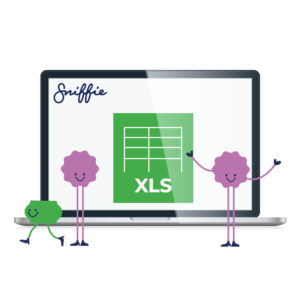The customer lifetime value (CLV) is a valuable metric that shows the total amount of money a business expects a customer to spend on products and services throughout the customer relationship.
Businesses need to know who their most valuable customers are and customer lifetime value is an important measure in determining that.
Smart marketers are always on the lookout for better ways to forge mutually beneficial relationships with customers, as it’s profitable for them and provides value to the customer.
They realize that it is cost-effective to keep existing customers on board instead of keeping on the lookout for more buyers and onboarding them.
Some metrics matter immensely to businesses and need to be checked regularly to see how the customer buying journey looks like and what makes customers loyal enough to consider purchasing again – CLV is one such metric.
Download our Free CLV Calculator
Determine the lifetime value of one or multiple customers and integrate CLV seamlessly into your strategic planning initiatives.

What Is Customer Lifetime Value And What Is Its Purpose?
The customer lifetime value (CLV) is a valuable metric that shows the total amount of money a business expects a customer to spend on products and services throughout the customer relationship.
This figure shows businesses where they need to redirect the marketing spend to draw in new customers or retain existing ones.
It puts a numeric value on how valuable a specific customer or segment’s relationship is to the business and how much should be invested in that relationship.
Companies get insights about customers and can create well-informed marketing strategies to achieve their marketing goals and develop loyal customers who advocate for their brand.
In short, it helps focus on the long term profitability of business rather than short term gain so that both business and customers reap benefits.
CLV can be calculated in several ways:
· Overall CLV: An average of all CLVs, indicating how much to spend on average to acquire and nurture customers.
· CLV per Customer: CLV for each customer individually – data helps form patterns to segment customers into different profiles and allows testing of nurture and acquisition campaigns.
· CLV For Specific Customer Profiles/Segments Or Marketing Campaign: Once a profile or segment of customers is created, businesses can find out which customers fit a particular profile and how marketing efforts impact their CLV – e.g., acquiring referred customers is less expensive and they may stay with the business longer (less spending).
The Customer Lifetime Value Formula
In simplistic terms, the easiest way to calculate the CLV is to add up all the revenues earned from a customer throughout the relationship and subtract the initial cost to acquire that customer.
CLV= [ Annual revenue per customer x Customer Relationship (years)] – Customer Acquisition cost
For instance, you’re an online fashion brand and generate $700 per year per customer. The average time that a customer stays on board with your brand before switching is three years, and you spend an average of $100 per customer to acquire them.
Here’s a calculation of your CLV per customer,
CLV per customer = (700 x 3) – 100 = 2000 €
This is a very simplistic example where you can justify your marketing efforts and budgets that help you acquire customers and retain them. This calculation also assumes that the customer contributions to profits are consistent and are not subject to fluctuations.
If a business’s annual sales are subjected to fluctuations, it can be a bit more complicated as the following metrics need to be taken into account:
· Average gross margin per customer lifespan (Gm)
· Customer retention rate (Rr)
· Rate of discount (Rd)
The formula becomes:
CLV = Gm x (Rr)/(1 + (Rd – Rr))
Granted, this is a bit complex but it’s necessary to account for changes in the CLV over the years. This is the traditional method to calculate CLV which helps adjust for inflation with a rate of discount.
If this seems complex don’t worry, you need:
· Total yearly revenue
· Total unique purchases per year
· Total unique customers making those purchases
· The average number of years a customer continues their purchases from your business
Plug these numbers into the following series of formulae to get CLV.
· Average Purchase Value (APV) = Total revenue per year/Number of purchases per year
· Average Purchase Frequency Rate (APFR) = number of purchases per year/number of unique customers making those purchases
· Customer Value (CV) = APV x APFR
· Average Customer Lifespan (ACL) which is the average number of years someone purchases from your business
· Customer Lifetime Value (CLV) = CV x ACL
It can be time consuming to gather and input relevant data for CLV calculations.
With our CLV calculator, you can simplify the process and calculate customer lifetime value to aid your strategic decisions.
Making decisions becomes easier when you can gather relevant data and glean insights to support your decisions in front of top management.
Advantages And Uses Of Customer Lifetime Value
There are several advantages of using CLV as it enables businesses to use a number of marketing approaches instead of just relying on one as they consider viral, social as well as conventional marketing practices to attract customers and retain them.
Planning for business growth becomes easier – businesses know exactly how much their best customers are willing to spend regularly. CLV helps in planning sales strategies to help businesses grow in line with their long term goals with increased sales based on real data.
Natural Customer segmentation based on demographics and buying behaviors is possible with this powerful metric. Businesses can use it to pinpoint the needs of each customer segment and enhance their value proposition to cater to the most valuable customer segments, so that the business grows.
Lastly, CLV puts the focus back on the customer, so businesses don’t get caught up in accomplishments and accolades they’ve garnered in the past – they can better appreciate their customers with loyalty programs.
Potential Issues With Customer Lifetime Value
With all the advantages offered by CLV, it’s easy to lose focus on the long term goals and objectives of the business.
It’s difficult to predict patterns and changes in the economy – even if businesses are using a tool like CLV, they still need to keep updating their long term plans to account for any drastic changes in customer sentiments that may cost them in the long term.
Focusing on one group of customers and not paying attention to the other customer segments that don’t ‘seem’ profitable is a possibility when using CLV.
Businesses should pay attention to customers that contribute significantly to the bottom line, whether they’re the most valuable segment or not. Companies could lose money by not focusing on these customer segments.
Keeping track of all the metrics, including unique purchases, acquisition costs and revenues from each customer, can be a challenge, which makes it essential to track these metrics through software like Sniffie.
Sniffie even offers a CLV calculator to collect and interpret relevant metrics such as average purchase value, average purchase frequency rate and more so you can have your CLV as a ready reference for your strategic decisions about customer retention, loyalty and acquisition.


